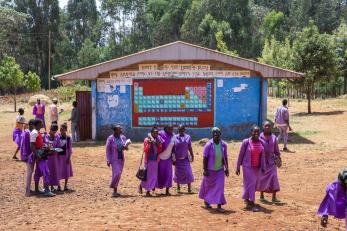Take action today to help keep girls in school

Across the globe, too many girls face barriers in accessing education. Currently, 132 million girls globally are not enrolled in school. Girls between the ages of 10 and 19 are three times more likely than boys to be kept out of school, especially in conflict-torn countries. There are many barriers impeding girls’ access to education, including lack of safety and inadequate sanitation facilities and products at school.
The COVID-19 pandemic has exacerbated existing inequalities and poses an even higher risk to girls’ education across the globe. According to UNESCO, an estimated 11.2 million additional girls may not return to school due to COVID-19. In Afghanistan, a country affected by decades of conflict, 3.7 million children, 60% of whom are girls, are not enrolled in school. Over 80% of girls in poverty in Guinea, Mali, and Pakistan have only attended two or fewer years of school.
The United States can take immediate action to promote girls’ education. A bipartisan group in Congress has introduced the Keeping Girls in School Act. If enacted, this bill would empower girls around the globe by focusing on innovative strategies for the U.S. government to address the barriers girls face in accessing quality secondary education. The legislation creates paths for funding and coordination to ensure that girls have safe and quality educational opportunities, and support to enroll in and attend school regularly. It focuses on adolescent girls, looking to help them with successful transitions from primary to secondary school and on through graduation.
Every girl deserves an education, and they cannot wait any longer. More must be done to ensure that getting an education is not a distant dream for many girls around the world. Investing in girls’ education can help empower them, build their future, and lift their households and communities out of poverty. According to the World Bank, lifetime earnings for women could increase by $15 trillion to $30 trillion globally if every girl received a quality secondary education.
Please urge your Members of Congress to support and co-sponsor the Keeping the Girls in School Act so that no girl is left behind. Investing in girls’ education has never been more urgent.
Here is the letter we’ll send to Congress on your behalf:
